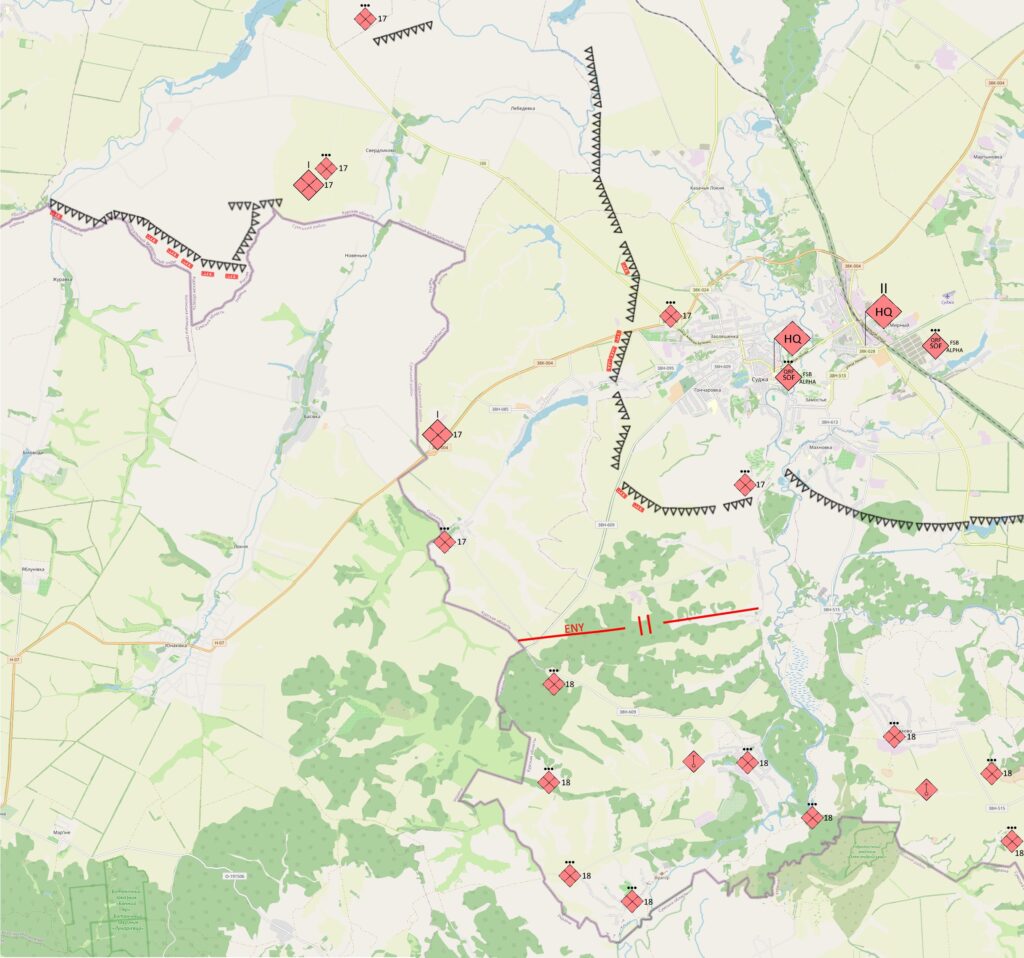On August 6th, 2024, the Ukrainian Armed Forces launched an incursion into Russia’s Kursk region, seeking to take control of Russian territory in the region. Supported by armored vehicles, tanks, Electronic Warfare equipment, FPV drones, infantry companies organized largely into Kampfgruppe (or ‘small joint task forces’), Ukraine’s armed forces overtook Russian border guards, Russian conscripts (largely territorial or home defense units), Special Operations Forces, and specialized units of Russia’s FSB, eliminating the threat posed by the standard complex of anti-armor kill zones. The incursion succeeded in the capture of the Sudzha gas terminal, a geopolitically significant military objective, worth hundreds of millions of dollars in yearly transit fees.
Currently, a debate is raging over whether or not the Ukrainians ‘break through’ Russia’s ‘defenses.’ It is clear that Ukraine advanced beyond the obstacles imposed by the standard complex of anti-armor kill zones such as (anti-vehicle ditches, for instance) but given the nature of Russia’s defense, a hardly guarded area Russia did not consider to be a part of the ‘front’ per se, calling Ukraine’s lightening advance a ‘breakthrough’ is exaggeration. The vast majority of Russia’s defenses, visible in photographs, videos, or satellite imagery both before as well after the incursion, indicate a defensive paucity in might as to be almost unguarded. These most certainly lacked military manpower, equipment or support. Russian defenses along the border with Kursk, for instance, did not contain elements of the famous Surovikin lines Ukraine’s failed ‘Spring’ counteroffensive could not penetrate.
The primary element is Russia’s long range strike, Intelligence, Surveillance, and Reconnaissance (ISR), or artillery umbrella; the number of Russian installations of short, medium, or long range types of artillery is significantly less dense, supplied, or more widely dispersed along the border with Kursk than along the famous Surovikin lines. Secondly, Russia’s aviation, which is not positioned along the border in Kursk in the way aviation divisions were along the Surovikin lines before the ‘Spring’ counteroffensive, differed. Thirdly, Russia’s responsiveness and readiness, which is based on the number of combat ready corps, armies or divisions in Kursk, displayed an obviously, slowly muted reaction to the incoming lightening Ukrainian advance. The Russians, for instance, brought “in conscripts from Murmansk in the far north, forces from Kaliningrad and other resources,” as well as armor, tanks, and redeployed Russian units from Chasiv Yar. These transfer are a sufficient indicator of the hallowed depth of manpower and material the Russians maintained in Kursk.

Given these the lack of these three elements, Ukraine’s lightening advance cannot necessarily be called a ‘breakthrough’ not does it appear as Ukraine’s advance ‘penetrated’ Tactical Reconnaissance Strike Complex. It appears that by all accounts, Ukraine’s exploited Russian weaknesses to penetrate into Russian territory. Nonetheless, Ukraine’s exploitation of Russian weaknesses is a manifestation of Clausewitz’s Flashing Sword of Vengeance.
